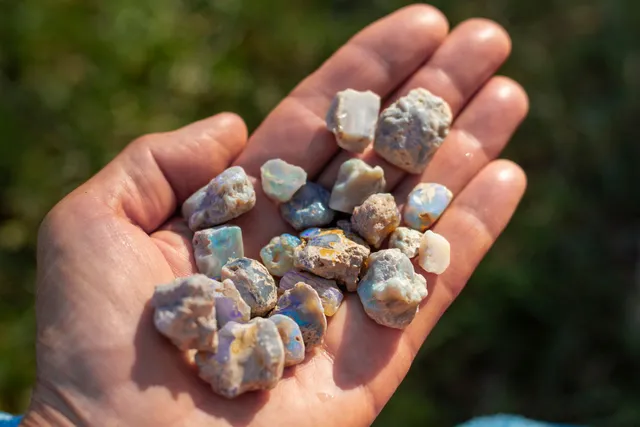When you hold a spiritual gem in your hand—whether it’s a polished amethyst pendant or a raw black tourmaline bracelet—you’re holding a piece of the Earth that has traveled an incredible journey. Behind every gleaming crystal is a natural process shaped by time, pressure, and the planet’s hidden alchemy. But how do these sacred stones go from deep within the Earth to wearable spiritual tools?
Let’s explore how spiritual gems are mined, shaped, and drilled, with care and intention.
🌍 The Mining Process: Unearthing Earth’s Hidden Treasures
Spiritual gems and crystals are formed over millions of years under intense heat and pressure, typically in the Earth’s crust or volcanic regions. Once discovered, the first step is mining—carefully removing them from their natural environment.
There are several types of mining methods used, depending on the gem and location:
-
Open-pit mining: A surface-level method used when crystals are near the topsoil. It’s less invasive and often used for quartz, fluorite, or citrine.
-
Underground mining: Used for deeper deposits, such as lapis lazuli or some types of tourmaline. This method requires tunnels and shafts.
-
Alluvial mining: This method gathers crystals that have been washed down from mountains and settled in rivers or dry creek beds—common for gems like garnet or sapphire.

In recent years, there has been growing awareness around ethical mining, with a focus on fair labor practices, environmental responsibility, and sourcing stones from small-scale, community-focused operations. When possible, many spiritual jewelry makers seek out conflict-free and ethically sourced gems.
🔨 Shaping and Polishing: Bringing Out the Inner Beauty
Once the crystals are extracted, they are cleaned and sorted. Some stones are used raw for their natural energy, while others are cut and polished to bring out their color, clarity, and luster.
Artisans use a variety of tools—often diamond-tipped saws and grinders—to cut the gem into beads, points, or cabochons (rounded shapes for jewelry). This stage is done with care to preserve the stone’s energy while enhancing its beauty.
Polishing is done using water and fine abrasives to create a smooth, glossy surface. Many believe that this process should be done gently, with minimal heat and vibration, to protect the crystal’s natural frequency and healing potential.
🛠️ Drilling: Precision with Purpose
Drilling is the final step in transforming a crystal into a wearable piece—whether it’s a mala bead, pendant, or charm.
A small, high-speed rotary tool with a diamond-tipped drill bit is used to carefully bore through the gem. Because many crystals are brittle or contain internal fractures, drilling must be done slowly, often with water as a coolant to prevent cracking.
The hole is typically sized to fit cords or metal pins, and every crystal is inspected afterward for integrity. Some spiritual artisans believe in ritual cleansing or intention setting before and after the drilling process, to ensure the stone’s energy remains clear and balanced.
✨ From Earth to Energy
By the time a spiritual gem reaches your wrist, neck, or altar, it has passed through layers of Earth, skilled hands, and often, sacred intention. Whether it’s mined ethically from the Himalayas, hand-shaped in a village workshop, or strung with love into a handmade bracelet, every gem carries not just physical properties—but a story.
At Crystal Power Jewelry, we honor this journey by choosing pieces that reflect not only beauty and power, but conscious sourcing and meaningful creation.
Because your jewelry should be more than decorative—it should be deeply connected, inside and out.


